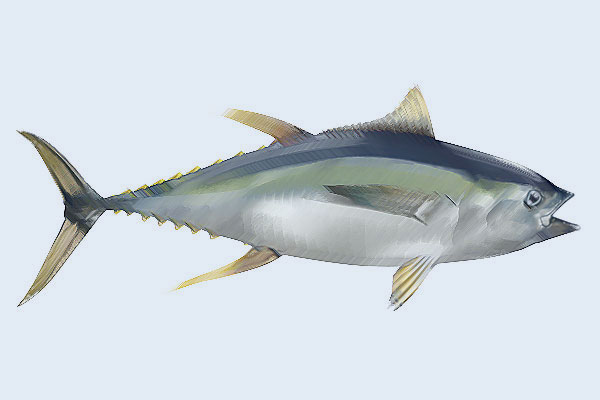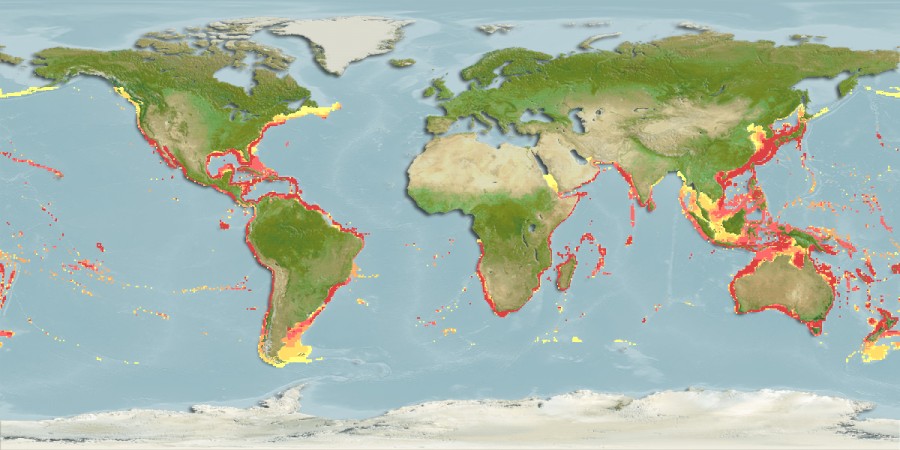Yellowtail
Classification / Names
Actinopterygii (Ray-finned fishes) > Perciformes (Perch-likes) > Carangidae (Jacks and pompanos)

Size / Weight / Age
Max length: 150 cm
Max published weight: 40.0 kg
Environment
Demersal; oceanodromous (Ref. 51243); marine
Climate / Range
Subtropical; 32°N – 20°N
Description
Japanese yellowtail is probably the most valuable member of the jack family. Superficially similar to the Australian yellowtail kingfish (California yellowtail) (Seriola lalandei), it is considered far superior as a table fish. Nevertheless, it is reported that the California species is occasionally offered as a substitute for Japanese yellowtail in the United States markets.
Yellowtail caught in Australia are also sometimes used for sashimi; however, the species has not yet developed acceptance for this purpose in Japan.
A large, silver fish with a shoaling habit, almost all production is now from farms, with limited catches of wild fish made mainly off the coasts of Central Japan.
Amberjacks, of which this is one, are frequently subject to substantial parasite infestations, including long worms in the major muscles of the sides. Farmers have learned how to prevent such problems, which would destroy the major market for the species.
Highlights
Yellowtail is one of the world's major farmed species; it has been grown successfully in Japanese marine waters for many years, supplying eager restaurant and department store markets for fresh, top quality sashimi. A large, fast-swimming jack, its successful domestication is a tribute to the skill of Japanese fish farmers, who have been able to tame such a species and make it respond and grow in captivity, where it has little room to swim.
Distribution
Northwest Pacific: Japan and the eastern Korean Peninsula to the Hawaiian Islands.
